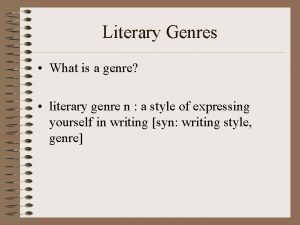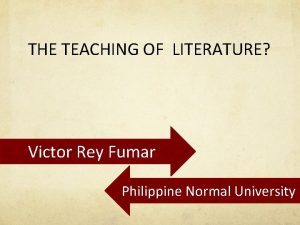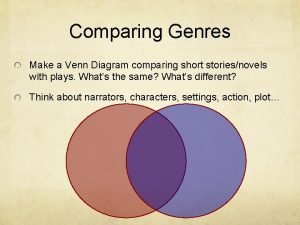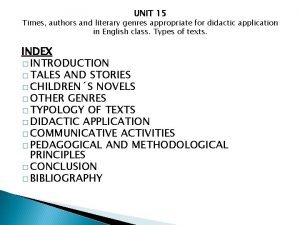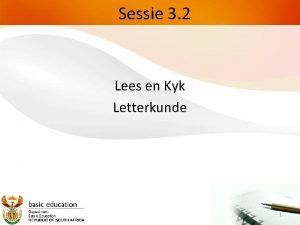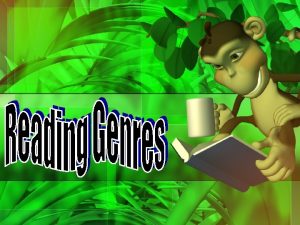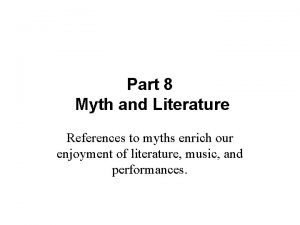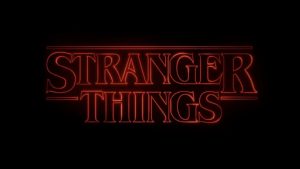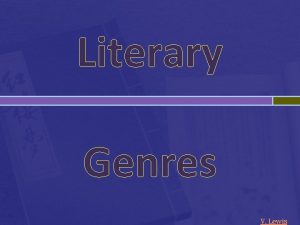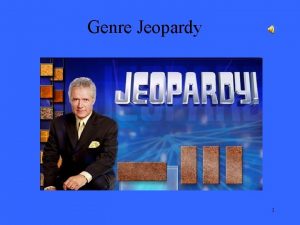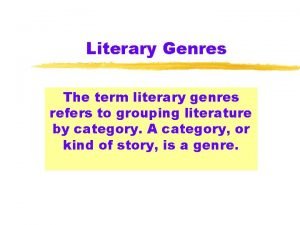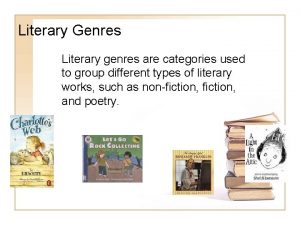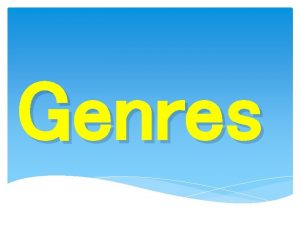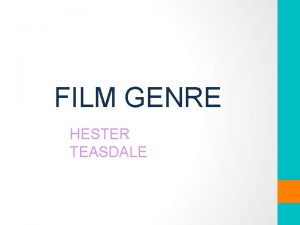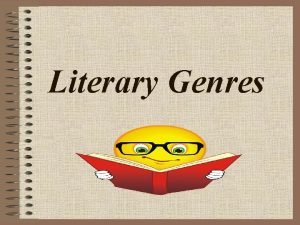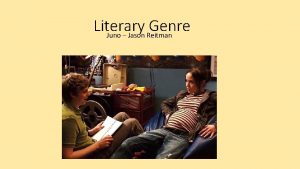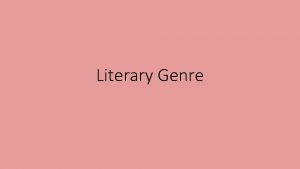LITERARY GENRES DEFINITION A literary genre is a











- Slides: 11

LITERARY GENRES

DEFINITION • A literary genre is a type of written or oral text with a specific purpose. • There are different types of literary genres but they can mainly be separated into: FICTION and NON-FICTION

FICTIONAL GENRES • Within fictional genres we can talk about: a- POETRY b- NARRATIVE c- DRAMA

POETRY FEATURES • Poems can tell stories or they can describe people, things and situations. Poets choose the words they use very carefully – they choose words for their sound and rhythm as well as for their meaning. It can be difficult to understand a poem the first time you read it, and different people can think a poem means different things. • Many poems are divided into stanzas – a number of lines without a gap. • There are many different styles of poetry, for example, a sonnet has 14 lines, a haiku has 17 syllables, and a limerick is a funny poem that is only five lines long.

NARRATIVE FEATURES • Narrative is a style of writing used for telling stories and writing about facts. It is used in short stories, novels, legends, newspaper articles and text books. It is continuous writing which is divided into paragraphs. Longer prose is divided into chapters as well.

TYPES OF FICTIONAL NARRATIVE Fairy tales • Fairy Tales are short fictional narratives belonging to a country folklore. • The main characters of fairy tales are usually magical creatures such as dwarves, witches, fairies, princesses, talking animals…. • The characters are either good or bad. • The setting takes place in a far away land in a far away time. • They usully finish with a moral which tries to teach something to the reader.

TYPES OF FICTIONAL NARRATIVE Myths • Myths are stories that are set in the ancient past. The people who originally told them and listened to them believed that they were true, or that parts of them were true. In Greece, as in other countries, myths were part of an ancient religion and explained the history of the people and the country. The gods and goddesses in Greek myths had superhuman powers.

TYPES OF FICTIONAL NARRATIVE Legends A legend is a semi-true story, which has been passed on from person-to-person and has important meaning or symbolism for the culture in which it originates. A legend usually includes an element of truth, or is based on historic facts, but with 'mythical qualities'. Legends usually involve heroic characters or fantastic places and often encompass the spiritual beliefs of the culture in which they originate.

TYPES OF FICTIONAL NARRATIVE Fables are short stories that are usually about animals. They are intended to teach a lesson. In fables, animals have got human characteristics (they can talk, etc)

DRAMA • Drama is a story which is acted out rather than read silently as a book. It is usually fiction but it can be based on fact. The symbol of drama is two masks: one smiling and one sad. These represent comedy and tragedy. • Tragedies have unhappy endings. The main characters are in difficult situations and they make the wrong choices. In the tragedy of Romeo and Juliet, the difficult situation is that their two families hate each other, then Romeo and Juliet both make the wrong choices and decisions and their story ends in tragedy. • In comedies, people often misunderstand each other or they decide to do something unusual which leads to a funny situation.

NON-FICTION • Non-fiction is text which gives information, explains facts, gives instructions, puts forward arguments or ideas to persuade people, or describes factual events. You can read nonfiction in books, newspapers or magazines, brochures or reports. • Non-fiction texts often have headings which divide the text into sections. The headings help to describe what information is in the text. The reader can use the headings to find information and to choose which sections they want to read.
